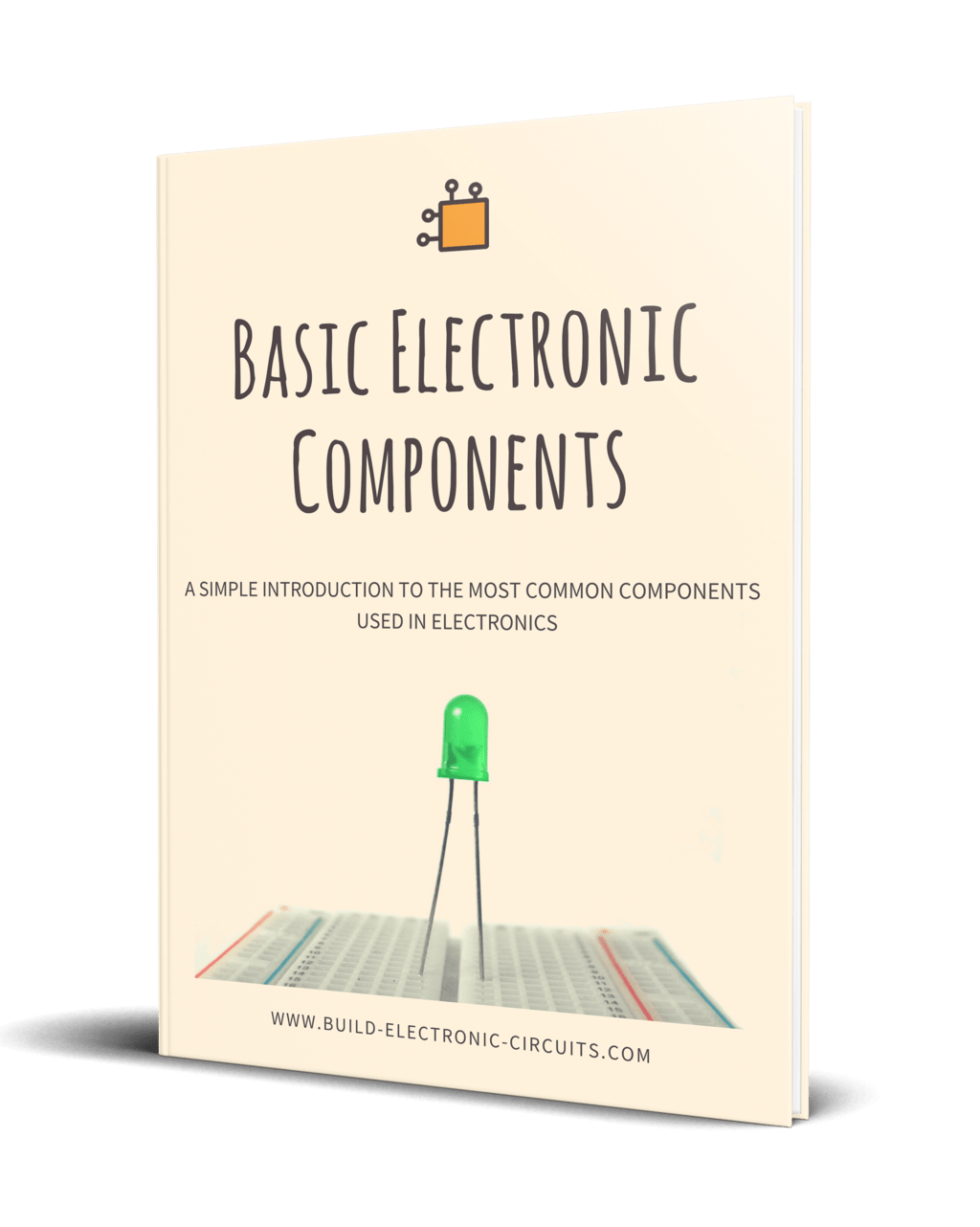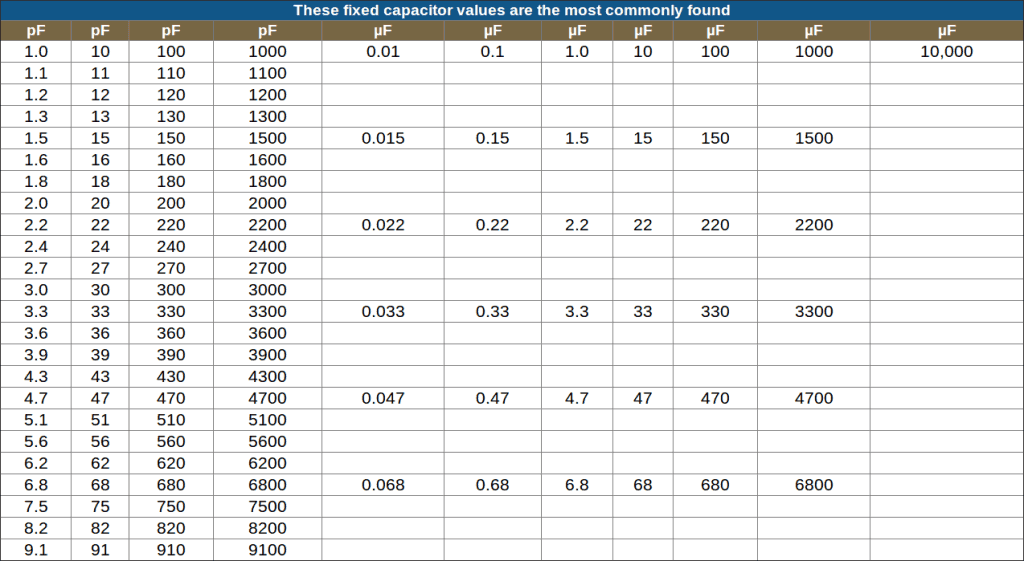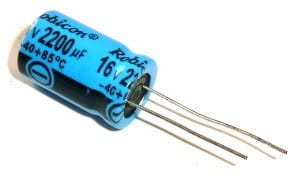There are some standard capacitor values that have developed over time. To find the value you need for your circuit you need to know how to deal with prefixes. And you need to know how to calculate capacitor values.
If you have looked for capacitors, you have probably seen many different letters and weird values. Like 0.47 µF or 22 pF. It is a bit confusing, but it’s easy to learn what it means.
In this article you will learn the most standard capacitor values, the prefixes used and how to calculate a capacitor value for your circuit.
The Prefixes
Capacitor values are given in Farad. The symbol used is F. It’s named after the English physicist Michael Faraday.
But 1 Farad is pretty big. So capacitor values are usually given with a prefix. Often you are going to work with capacitors values in pico-farads to micro-farads.
To make this simpler to deal with, I’m going to show you how the prefixes work.
A prefix is something you put in front of the farad symbol (F). It tells you what you have to multiply the number with. For example, 1 pF means 1 F multiplied with the prefix p which is 10-12. It can also be written as 0.000000000001
Here is a table with the most common prefixes for capacitors:

Get Our Basic Electronic Components Guide
Learn how the basic electronic components work so that circuit diagrams will start making sense to you.
| Prefixes | ||
|---|---|---|
| 1 F | 100 | 1 Farad |
| 1 µF | 10-6 | 0.000001 Farad |
| 1 nF | 10-9 | 0.000000001 Farad |
| 1 pF | 10-12 | 0.000000000001 Farad |
Which Capacitor Values Are There?
Capacitors are available in a lot of values. Over time, some standard values have emerged. Here is a table from rfcafe.com with the most commonly found capacitor values:

How Do You Choose Capacitor Values?
You choose a capacitor value by using the RC time constant:
![]()
This constant gives you the time it takes for a voltage in an RC circuit to go from 0% to 63% of its full value.
You can use this time constant to calculate the cutoff frequency in a filter, or just how long a delay will be in a blinking light circuit.
Calculating Capacitor Value For A Circuit

Let’s say we want to make a low pass filter with a cutoff frequency of 15 kHz. The formula for calculating cutoff frequency is:
![]()
and by switching it around we can calculate for C:
![]()
Now, let’s choose to use a 1k resistor. This gives us:
![]()
So to get a cutoff frequency of 15 kHz, we need a 1k resistor and a 11 nF capacitor.
Different Types of Capacitors
To make everything more confusing, capacitors come in many different types. I have written a simple guide on how to choose a capacitor type that you should check out.
There is no need to memorize these things. Just bookmark this page and you’ll have easy access to it later on. When you have used the prefixes and the formula enough times, you will automatically remember them.
Return from Capacitor Values to Electronic Components Online
More Capacitors Tutorials

10 Simple Steps to Learn Electronics
Electronics is easy when you know what to focus on and what to ignore. Learn what "the basics" really is and how to learn it fast.

